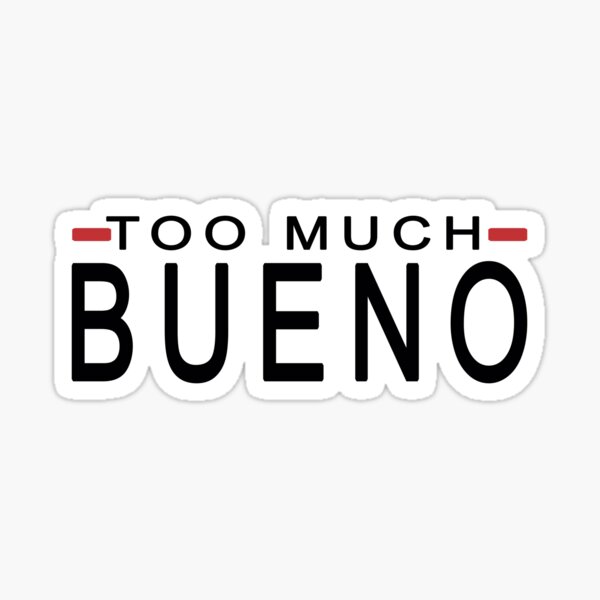Is it surprising that even native English speakers wrestle with “good” versus “well”? This mirrors the challenge encountered by Spanish learners with the difference between bien and bueno. Although similar in appearance and meaning, understanding their correct application is pivotal for achieving fluency in Spanish grammar. The journey to distinguish when to use bien and bueno transcends mere vocabulary growth.
It taps into understanding the intricate fabric of language that weaves adjectives in Spanish with adverbs. Engaging with Spanish language learning at this level illuminates the usage of bien and bueno. Here, ‘bien’ functions as an adverb, probing into “How?” and “To what extent?” Contrarily, ‘buen/bueno’, an adjective, demands congruence with the nouns it modifies. This guide is your definitive roadmap to demystifying Spanish grammar bien vs bueno, transforming confusion into clarity.
Table of Contents
- Understanding Bien vs Bueno: Spanish Grammar Essentials
- Muy Bueno and Muy Bien Examples
- Diving Into “Bien”: Unraveling Its Usage in Spanish
- START YOUR SPANISH CLASSES TODAY
- The Versatility of “Bueno” in Spanish Language
- Apocopation in Spanish: The Shift from Bueno to Buen
- “Bien” and “Bueno” in Action: Real-Life Examples
- The difference between bien and bueno or muy bien and muy bueno
- Practical Tips for Mastering Bien vs Bueno
- Sharpen Your Spanish Pronunciation and Writing Skills
- Conclusion
- FAQ
- Q: What is the main difference between ‘bien’ and ‘bueno’ in Spanish?
- Q: When should I use ‘bien’ in Spanish?
- Q: Can you give examples of when to use ‘bueno’?
- Q: What is the apocopate form of ‘bueno’ and when is it used?
- Q: How do I decide whether to use ‘muy bien’ or ‘muy bueno’?
- Q: What are some common mistakes when using ‘bien’ and ‘bueno’?
- Q: Are there any tips to help remember when to use ‘bien’ and when to use ‘bueno’?
- Q: Is there a difference in pronunciation between ‘bien’ and ‘bueno’?
- Q: Where can I practice using ‘bien’ and ‘bueno’ correctly?
- Q: Are there any similar grammatical concepts in English that can help me understand ‘bien’ vs ‘bueno’?
Understanding Bien vs Bueno: Spanish Grammar Essentials
The Spanish grammar landscape contains complexities such as distinguishing bien and bueno. It’s critical to grasp their distinct functions. ‘Bien’ acts as an adverb, employed to describe the manner in which actions are executed. For instance, saying “Canto bien” (I sing well) demonstrates bien’s role in modifying the action of singing. Misuse of ‘bien’ in places meant for ‘bueno’ underscores the necessity of understanding when to use bien or bueno.
Conversely, ‘bueno’ and its variant ‘buen’, used before masculine singular nouns, function as adjectives. They must match the gender and number of the nouns they modify. An example is “Los chicos son buenos” (The boys are good), showing concordance with ‘chicos’. The distinction between bien and bueno is crucial for accurately conveying meaning.
Comprehending their grammatical roles is vital. Practical application in phrases like answering “¿Cómo estás?” with “Bien” illustrates this distinction. Yet, proficiency in Spanish grammar essentials extends to mastering verbs and pronouns, where verbs can have fifty forms and pronouns vary by person, number, and gender.
The formation of Spanish language norms dates back to 1492, marked by the publication of the first European vernacular grammar. The Real Academia Española (RAE) has since set linguistic standards. Resources by DeBruyne, Butt & Benjamin, and Batchelor & San José are invaluable for navigating the complexities of Spanish grammar essentials.
- It’s imperative to remember the three form classes for Spanish verbs (-ar, -er, or -ir) when dissecting their nine indicative tenses, each with potential forms adapted for person and number.
- Spanish’s two-gender system for nouns, marked for number, provides another layer of complexity that the learner of Spanish needs to navigate skillfully.
- In the realm of intercultural pragmatics, studies leveraging tools such as pragmatic interventions demonstrate that students have the capacity to markedly improve their recognition of appropriate compliment sequences in Spanish, showcasing the tangible results of targeted language instruction.
Mastering ‘bien’ and ‘bueno’ enhances one’s ability to artfully maneuver through Spanish grammar. Engaging with structured lessons on verb conjugations and communication nuances is fundamental. Such diligence in learning translates into eloquent fluency, making every learner’s journey a narrative of success.
Muy Bueno and Muy Bien Examples
- Juan lee bien = Juan reads well.
Here we are not modifying Juan, but the verb “read”. So, if we ask the question “¿Cómo lee Juan?” (“How does Juan read?”), the answer is going to be “bien” (“well”).
This seems quite simple, right? But… why is it so confusing, then?
Now, what usually confuses students about this topic doesn’t have anything to do with the words “bueno” and “bien”. As a matter of fact, it’s usually an issue about the verb “to be” in Spanish!
If we ask “How are you?” (as a greeting), the most decent translation won’t be “¿Cómo eres?” (ser), but “¿Cómo estás?” (estar).
The answer for “¿Cómo estás?” should be “Bien” instead of “Bueno”, because we’re modifying the verb, not a noun.
- ¿Cómo está Gabriel? (How is Gabriel? / How’s Gabriel doing?)
- Está bien (He’s fine).
We’re modifying the verb.
- ¿Cómo es Gabriel? (How is Gabriel like?)
- Es bueno (He’s good / He’s nice).
Diving Into “Bien”: Unraveling Its Usage in Spanish
The term bien distinguishes itself as a polysemic entity, encapsulated by the Real Academia Española (RAE) through 18 distinct interpretations. Its utilization primarily emerges in an adverbial form, embellishing verbs and addressing queries of “How?” or “In what manner?”. This embodiment as “utilizing muy bien” amplifies an adjective, thereby enhancing expressions to convey superior states like “exceptionally well” or “remarkably good.” Such instances are omnipresent across Latin American realms, elevating adjectives into more potent articulations, evident in phrases like “bien interesante” or “¡Qué bien hablas español!”
Comprehending the judicious employment of bien in Spanish necessitates acknowledgment of its contextually flexible nature. It can reflect an accord or satisfaction, depicted when a student utters “¡Muy bien, gracias” following positive commendation. Concerning one’s state of well-being or disposition, “No me siento muy bien” aptly communicates a less than optimal feeling. This semantic reach extends to technology and device efficacy, with “Mi tablet no funciona muy bien” indicating subpar performance.
Utilization of bien pervades daily Spanish dialogue, from affirming actions with a succinct “¡Bien! ¡Ganamos!” to showcasing fervor across myriad scenarios. Within this usage continuum, the critical distinction between bien and its counterpart bueno emerges saliently. The latter typically functions as an adjective, describing innate qualities or the inherent goodness of nouns, aligning with the English “good” and requiring concordance in gender and number. Whether in conjunction with “ser” or “estar,” bueno modulates its implication, traversing domains of quality or situation to taste or allure.
- Bien meaning transcends simple affirmation or dignified qualities, serving also as a pivotal adjective modifier, akin to “very” or “really”.
- In contrast, bueno or its abbreviated variant buen (preceding masculine singular nouns) denotes a noun’s favorable attributes, positioning bueno as the primary translation for “good”.
- The applicative elasticity of bien occasionally facilitates conversational conflict mitigation, signaling accord or tempering tensions.
In summation, grasping the nuanced application of bien, alongside its connotations and context-appropriate uses, constitutes an integral facet of achieving Spanish linguistic mastery. The elucidated dichotomy between bien and bueno not only highlights differential word usage but also underscores cultural subtleties and communicative styles prevalent within Spanish-speaking collectives. It remains vital to recognize bien as fundamentally an adverb and bueno, an adjective, to navigate these linguistic tools effectively, thereby enriching and refining one’s Spanish language proficiency.
The Versatility of “Bueno” in Spanish Language
In the context of Mexico, where Spanish predominates, bueno permeates daily exchange, showcasing the language’s vitality. Mastery of when to use bueno in Spanish becomes crucial due to its diverse meanings across various contexts. It defies the simplicity of the English “good,” becoming central in cultural dialogues and exchanges.
As an adjective, bueno serves multiple purposes. It can describe personalities, such as in “Ella es una niña muy buena,” or acknowledge abilities: “Él es un buen cocinero.” Its versatility extends to evaluating craftsmanship, like in “Este teléfono es muy bueno.” Moreover, culinary experiences gain richness through its use: “Este taco está muy bueno.”
The power of bueno in conversational Mexican Spanish transcends tangible objects. It functions as a verbal nod, conveying affirmation or beginning dialogs, especially over the phone: “¿Bueno?” This emphasizes the value of colloquial mastery for professionals in tourism or international trade, where understanding local speech nuances paves the way to success.
In the mosaic of Mexican Spanish, bueno captures a wide spectrum of sentiments and social connections. Its application varies from casual slang to expressions loaded with historical or societal implications. Delving into the muy bueno meaning and similar phrases enhances one’s grasp of Latin American culture and professional acumen.
Thus, knowledge of bien and bueno meanings is essential for navigating Mexican Spanish. These terms, reflective of a dynamic, historically rich, and evolving language, encapsulate the vibrant communication style of Mexico. They enrich not only personal interactions but also broaden professional vistas.
Apocopation in Spanish: The Shift from Bueno to Buen
Apocopation in Spanish is evident in the shift from bueno to buen. Esteemed learners often ponder cuando usar buen or bueno. This reflects the complexities of adjective comparison in Spanish. The transformation is governed by the noun’s attributes. For a masculine singular noun, bueno becomes buen, placed right before the noun it modifies. Though this change appears minor, it critically improves one’s mastery of Spanish.
The application of apocopation in Spanish is revealed in AS and A Level Year 1 Spanish courses. Here, students explore various grammatical frameworks. Among these, the shift from bueno to buen is a fundamental element. It enriches the students’ understanding of grammatical intricacies.
- The Listening, Reading & Writing exam lasts 1 hour 45 minutes with 90 marks possible. Here, adjectives like gran, buen, mal, and primer are often used, especially in contexts reflecting Hispanic society and culture.
- In the Writing exam, candidates must compose around 250 words. The adept use of buen enhances their prose, particularly when discussing topics such as contemporary idols or cultural heritage.
- The Speaking exam improves interactive communication. Candidates might use apocopated buen in persuasive arguments or descriptions, adding to the conversation’s fluidity.
Grammatical accuracy at the A-level is crucial. It requires an in-depth understanding of when to use buen with masculine nouns, and bueno otherwise. Mastery of these distinctions can elevate a student’s performance, possibly influencing their final grades.
In summary, grasping cuando usar buen or bueno adds sophistication to language use. This knowledge aids both students and enthusiasts in achieving linguistic finesse. The skill is valuable in various settings, from academic environments to casual conversations in the Caribbean’s ABC islands. Proper apocopation exemplifies the richness of Spanish grammar, highlighting its cultural and grammatical depth.
“Bien” and “Bueno” in Action: Real-Life Examples
Exploring the utilitarian aspects of bien and bueno reveals invaluable insights into their roles within everyday discourse. We offer a curated array of scenarios that illuminate the distinguishing bien and bueno, tailored for those mastering Spanish. Through the examination of such cases, we provide examples of bien and bueno usage, accompanied by clear explanations bien and bueno.
- The term bien encapsulates feelings of well-being or satisfaction. In response to, “¿Cómo estás?”, replying with “Bien,” signifies the respondent’s positive state.
- Bien is also pivotal in affirming plans within conversations: the exchange “-Nos vemos en la entrada.” followed by “-Está bien,” denotes concordance with the outlined agenda.
Conversely, bueno is prevalently used in appraising worth or merit:
- Evaluating a person’s virtues, as in “Mi hijo es muy bueno,” translates to “My son is very good,” which spotlights bien and bueno in action.
- In assessing objects or works, the remark, “Este libro es muy bueno,” translates to, “This book is very good,” offering insight into bien vs bueno in Spanish.
- About a male subject, buen subtly conveys excellence: “Es un buen chico” means “He is a good boy,” further illustrating examples of bien and bueno usage.
These instances underscore bien and bueno‘s roles in affirming positivity or making quality assessments, each according to its grammatical function. By engaging with these examples of bien and bueno usage, learners can deepen their understanding of these crucial Spanish terms, enhancing their ability to distinguish bien and bueno.
The difference between bien and bueno or muy bien and muy bueno
In the realm of the Spanish language, mastering the main differences between bien and bueno is paramount. They distinguish between complimenting an action and the quality of an object. “Muy bien” conveys approval of achievement, as in “Muy bien, eso es todo por hoy,” signaling a task’s successful completion. Contrarily, “muy bueno” highlights an object’s superior quality, evidenced by “Este platillo está muy bueno.” Such distinctions underscore the intricacies inherent in understanding bien and bueno, reflecting the richness of Spanish linguistics.
Differences in their application emerge from the Spanish language’s unique syntactical rules. Utilizing “ir a + infinitive” denotes future intentions, while the preposition “a” often marks the beginning of an action. The “personal a” is mandatory before a person serving as a direct object. A profound comprehension of these terms is vital, considering the variance in Spanish dialects. The preference for “cuando usar muy bien” versus “cuando usar muy bueno” can depend on regional linguistic tendencies.
- In contexts where verbs follow, always opt for “bien” to modify the action.
- When describing nouns, “bueno” (or “buena,” “buenos,” “buenas” for gender and number agreement) should be utilized.
- The expressions beginning with “a” serve an adverbial purpose, indicating the manner of an action, thus emphasizing the importance of verb or noun differentiation.
- The use of the preposition “a” for time of day further demonstrates the extensive role of adverbial phrases in the language.
In the vast Spanish-speaking world, expertise in using muy bien and muy bueno correctly signals linguistic dexterity. This competence spans Mexico’s extensive Spanish-speaking population to Chilean and Honduran dialect peculiarities. The nuances of these terms permeate the geographically diverse dialects, including Caribbean and Andean, and are marked by pronounced differences in pronunciation, vocabulary, and syntax. Spanish’s global influence is manifest, directly affecting non-native variations such as Philippine Spanish and the distinct Judaeo-Spanish (Ladino).
- Determine whether your subject is a verb (action) or a noun (thing or person).
- Acknowledge the dialectal distinctions within Spanish, which may influence your choice of terms.
- Engaging with native speakers and diverse Spanish-language media will refine your proficiency.
- Be aware of grammatical structures governing the application of “muy bien” and “muy bueno.”
The decision to use “muy bien” in applauding a friend’s action or “muy bueno” in praising Spanish gastronomy is pivotal in mastering Spanish linguistic nuances. Considering the global community of approximately 360 million native Spanish speakers and countless learners, precise usage of these terms is central to effective communication in this universally spoken language.
Practical Tips for Mastering Bien vs Bueno
A deep understanding of context and appropriate term usage is pivotal in mastering Spanish. The distinction between bien and bueno forms a critical part of this learning curve. For those intent on achieving fluency, familiarizing oneself with the nuances of tips for bien vs bueno usage proves indispensable. Implementing these tips in daily speech significantly bolsters one’s command of the language.
In evaluating the bien bueno usage tips, situational context is key. Assess whether the discussion pertains to an individual’s virtues or a meal’s palatability. For instance, ‘Juan es muy bueno’ comments on character, while ‘este aceite está bueno’ lauds culinary quality. The richness of Spanish also extends to expressions of irony through ‘estar bueno’, injecting complexity into dialogues.
Cinematic and social interactions often introduce distinct expressions, like ‘fue una buena fiesta’ versus ‘estuvo muy interesante’. These phrases differ in their focus on collective enjoyment versus individual experience. A valuable asset for those dissecting these subtleties is mastering bien vs bueno. This resource elaborates on usage rules and offers comprehensive insights.
- To discern the correct usage, consider the emphasis: is it on the action or the subject? Actions and conditions align with ‘bien’, while ‘bueno’ attaches to subjects.
- Factor in temporality when differentiating between phrases like ‘fue buena’ or ‘estuvo muy bien’, which pertain to past experiences versus enduring qualities.
- Notice how positioning ‘bueno’ before or after a noun can change the meaning. ‘Un buen abrigo’ suggests a high-quality coat, while ‘una de las malas películas’ implies restrictive quality.
- Mind the colloquial usage. Phrases such as ‘qué bien’ or ‘qué bueno’ often carry subtle regional differences in exclamatory expressions.
Grasping the bien vs bueno distinction requires awareness of the implications of each term. This includes how they combine with ‘ser’ or ‘estar’. Such knowledge is crucial in making informed choices between bien and bueno. It is also vital to recognize the difference between ‘hacer algo mal’ and ‘hacer algo malo’, which distinguish between an incorrect action and one with negative implications.
Most importantly, regular practice is essential. Interaction with native speakers and immersion in Spanish media are recommended. Reflecting on real-time feedback enhances proficiency. With dedication, differentiating between ‘bien’ and ‘bueno’ becomes an intrinsic skill, thus elevating your Spanish language proficiency.
Sharpen Your Spanish Pronunciation and Writing Skills
As the second-largest language in the United States, Spanish boasts nearly 500 million global speakers, magnifying the necessity to improve Spanish language skills. The attainment of Spanish pronunciation skills and Spanish writing skills markedly elevates both employability and cultural literacy. Focusing on the pronunciation of bien and bueno, and ensuring accurate writing of bien and bueno, are pivotal for fluency enhancement.
The Foreign Service Institute posits that English speakers may learn Spanish in a mere 24 weeks or 575-600 hours of study, thanks to its phonetic structure and practicality. The application of a strategic study framework, such as Objectives and Key Results (OKR), could expedite this process. By blending learning methods, including audio immersion, daily writing drills, and structured coursework, learners could master the Spanish language proficiently within a twelve-month period.
- Utilize audio resources several times weekly to refine your Spanish pronunciation skills, with an emphasis on phrases like the pronunciation of bien and bueno.
- Undertake regular writing practices that incorporate common terms, slang, and expressions to enhance your Spanish writing skills.
- Allocate time to blend formal education and conversational practice with native speakers, aiming to improve Spanish language skills effectively.
An effective approach to language immersion includes acquainting oneself with casual terms and regional idiosyncrasies. Understanding Spanish comprehensively entails learning Mexican slang such as “achichincle” (assistant) and “apachurrado” (crushed), alongside exclamatory phrases like “¡alv!” (a swear phrase expressing astonishment), and culinary terms such as “atole” (a traditional warm corn-based drink). Mastery of terms linked to emotions and behaviors, for instance, “briago” (drunk), enriches conversational fluency, lending authenticity to one’s writing.
To master the Spanish language fully, one must delve into its vast assortment of phrases and idioms, which vary wildly across regions. Mexican Spanish expressions, such as “A la ‘Viva Mexico’, hacer” (to act with great enthusiasm), introduce learners to the rich cultural tapestry and linguistic complexity of the language.
- Acquaint yourself with diverse Mexican slang and regional expressions, integrating these into conversations as fitting.
- Engage in daily sessions, focusing on terms relevant to transportation like “bocho” (Volkswagen Beetle), to maintain a steady learning pace.
- Participate in Spanish language courses at least twice a week to give structure to your studies and to interact with peers.
In essence, mastering Spanish transcends academic learning, demanding active participation in the culture’s expansive repository of slang, gestures, and expressions. Steeped in consistent practice and cultural immersion, you can significantly improve Spanish language skills, thereby attaining the prowess to communicate with both precision and artistic flair.
Conclusion
Attaining fluency in Spanish involves grasping the subtle distinctions between ‘bien’ and ‘bueno.’ It is more than mere translation. This understanding uncovers the core of each word within the Spanish linguistic structure. ‘Bien’ acts as an adverb, shading how actions unfold, akin to “well” in English. Conversely, ‘bueno’ and its variant ‘buen’ function as adjectives. They must align in gender and number with the nouns they modify, similar to “good” in English.
Eloquence in Spanish, marked by the agile use of bien and bueno, signifies a profound command of the language. It transcends simple memorization, demanding practical knowledge of their correct application. The journey involves intricate verb conjugations and the precise deployment of pronouns. Analyzing ‘bien’ and ‘bueno’ through various grammatical constructs like verb tenses and the T-V distinction enriches one’s linguistic arsenal.
Consistent, context-driven practice is crucial for mastering these words. ‘Bien’ enriches idiomatic expressions, while ‘bueno’ critically assesses nouns. This use in speech and writing fosters genuine communication. Knowledge of these words, set within the framework of Spanish verbs, pronouns, and tenses, signifies linguistic adeptness. By navigating the nuances of Peninsular versus American Spanish, we recognize that these complexities enrich, rather than hinder, our understanding of the language’s true beauty.
FAQ
Q: What is the main difference between ‘bien’ and ‘bueno’ in Spanish?
A: ‘Bien’ functions as an adverb, employed to articulate the manner in which actions are executed. Conversely, ‘bueno’ serves as an adjective, designating the intrinsic characteristics or condition of nouns.
Q: When should I use ‘bien’ in Spanish?
A: Deploy ‘bien’ to depict either an activity or a condition, for instance, replying “Cómo estás?” with “Bien.” It can also enhance an adjective, as seen in “bien interesante.”
Q: Can you give examples of when to use ‘bueno’?
A: ‘Bueno’ acts as an adjective for elucidating a noun’s attributes, evident in “Juan es un buen profesor.” It’s also used to assert moral excellence, exemplified by “Mi hijo es muy bueno.”
Q: What is the apocopate form of ‘bueno’ and when is it used?
A: ‘Buen’ represents the apocopate variant of ‘bueno,’ applied preceding a masculine singular noun. This usage, as in “Es un buen chico,” retains ‘bueno’s’ essence but complies with a Spanish linguistic norm for smoother verbal expression.
Q: How do I decide whether to use ‘muy bien’ or ‘muy bueno’?
A: Opt for ‘muy bien’ to applaud an act or performance, illustrated by “Muy bien, eso es todo por hoy.” Choose ‘muy bueno’ for articulating the superior quality or merit of an entity or scenario, as in “Este platillo está muy bueno.”
Q: What are some common mistakes when using ‘bien’ and ‘bueno’?
A: Frequent errors encompass the misuse of ‘bien’ as ‘bueno’ for noun descriptions, or the reverse, alongside erroneous application concerning gender or numeral agreements with ‘bueno.’
Q: Are there any tips to help remember when to use ‘bien’ and when to use ‘bueno’?
A: An effective strategy involves associating ‘bien’ with actions and verbs, and ‘bueno’ with nouns and their characteristics. Recognizing ‘bien’ as an adverb and ‘bueno’ as an adjective aids in their accurate employment.
Q: Is there a difference in pronunciation between ‘bien’ and ‘bueno’?
A: Indeed, a subtle distinction exists in their articulation. ‘Bien’ concludes with an ‘en’ phonetic, whereas ‘bueno’ distinctively ends with an ‘o’. Engaging with native speakers for pronunciation drills enhances proficiency in these nuances.
Q: Where can I practice using ‘bien’ and ‘bueno’ correctly?
A: Engagements with native Spanish speakers, leveraging language learning applications, and indulging in Spanish-language media serve as excellent avenues for the accurate application of ‘bien’ and ‘bueno’ within conversational and written contexts.
Q: Are there any similar grammatical concepts in English that can help me understand ‘bien’ vs ‘bueno’?
A: The English distinction between “good” and “well” mirrors the ‘bueno’ and ‘bien’ differentiation. “Good” functions as an adjective, describing nouns, while “well” operates as an adverb, outlining the execution of actions or verbs, precisely aligning with the Spanish ‘bueno’ and ‘bien’ roles.


Maria Olson
At VAMOS Academy, I craft stories sprinkled with my love for exploration and food. Whether it’s the tang of a local dish or the rhythm of a new dialect, I bring these experiences to you. Ready for an adventure that tickles your taste buds and ignites your wanderlust? Let’s embark on this journey together, one story and one bite at a time.




